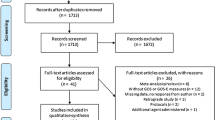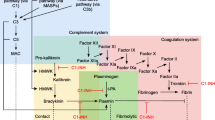Abstract
The glucocorticoid “steroids” have been employed extensively in the clinical treatment of central nervous system ischemia and trauma. The rationale for their use has mainly centered upon the expectation that they will reduce postischemic or traumatic brain edema. This notion is based upon the rather remarkable reduction of peritumoral brain edema. However, the efficacy of steroids either in relation to their ability to reduce or to promote neurological recovery following stroke or brain (or spinal) injury has been disappointing at best. Some neurologists and neurosurgeons have concluded that the conventional use of steroids in the acute management of CNS ischemia and trauma is not beneficial and is, in fact, fraught with potentially serious side effects. From a pharmacological perspective, there are several reasons that such a conclusion is premature.
Access this chapter
Tax calculation will be finalised at checkout
Purchases are for personal use only
Preview
Unable to display preview. Download preview PDF.
Similar content being viewed by others
References
Anderson DK, Saunders RD, Demediuk P, Dugan LL, Braughler JM, Hall ED, Means ED, Horrocks LA (1986) Lipid hydrolysis and peroxidation in injured spinal cord: partial protection with methylprednisolone or vitamin E and selenium. CNS Trauma (in press)
Braughler JM (1985) Lipid peroxidation-induced inhibition of gamma aminobutyric acid uptake in rat brain synaptosomes: protectin by glucocorticoids. J Neurochem 44: 1282–1288
Braughler JM, Hall ED (1982) Correlation of methylprednisolone levels in cat spinal cord with its effects on (Na+ + K+)-ATPase, lipid peroxidation, and alpha motor neuron function. J Neurosurg 56: 838–844
Braughler JM, Hall ED (1983) Lactate and pyruvate metabolism in injured cat spinal roil before and after a single large intravenous dose of methylprednisolone. J Neurosurg 59: 256–261
Braughler JM, Hall ED (1983) Uptake and elimination of methylprednisolone from contused spinal cord following intravenous injection of the sodium succinate ester. J Neurosurg 58: 538–542
Braughler JM, Hall ED (1984) Effects of multi-dose methylprednisolone sodium succinate administration on injured cat spinal cord neurofilament degradation and energy metabolism. J Neurosurg 61: 290–295
Braughler JM, Hall ED (1985) Current application of “high dose” steroid therapy for CNS injury: a pharmacological perspective. J Neurosurg 62: 806–810
Chyatte D, Rusch N, Sundt TM (1983) Prevention of chronic experimental cerebral vaso-spasm with ibuprofen and high-dose methylprednisolone. J Neurosurg 59: 925–932
Demopoulos HB, Flamm ES, Pietronigro DD, Seligman ML (1980) The free radical pathology and the microcirculation in the major central nervous system disorders. Acta Physiol Scand (Suppl) 492: 91–119
Demopoulos HB, Flamm ES, Seligman ML, Pietronigro DD, Tomasula J, DeCrescito V (1982) Further studies on free radical pathology in the major central nervous system disorders: effects of very high doses of methylprednisolone on the functional outcome, morphology and chemistry of experimental spinal cord impact injury. Can J Physiol 60: 1415–1424
Giannotta SL, Weiss MH, Apuzzo MLJ, Martin E (1984) High dose glucocorticoids in the management of severe head injury. Neurosurgery 15: 497–501
Hall ED (1982) Glucocorticoid effects on central nervous system excitability and synaptic transmission. Int Rev Neurobiol 23: 165–195
Hall ED (1985) High-dose glucocorticoid treatment improves neurological recovery in head-injured mice. J Neurosurg 62: 882–887
Hall ED, Braughler JM (1981) Acute effects of intravenous glucocorticoid pretreatment on the in vitro peroxidation of cat spinal cord tissue. Exp Neurol 73: 321–324
Hall ED, Braughler JM (1982) Effects of intravenous methylprednisolone on spinal cord lipid peroxidation and (Na+ + K+)-ATPase activity: dose-response analysis during 1st hour after contusion injury in the cat. J Neurosurg 57: 247–253
Hall ED, Wolf DL, Braughler JM (1984) Effects of a single large dose of methylprednisolone sodium succinate on experimental posttraumatic spinal cord ischemia: dose-response and time-action analysis. J Neurosurg 61: 124–130
Lainer MJ, Duncan LA, Braughler JM (1984) Methylprednisolone improves recovery in a gerbil stroke model: involvement of prostacyclin. Neurosci Abst 10: 999
Taylor MD, Palmer GC, Callahan AS (1984) Protective action by methylprednisolone, allopurinol and indomethacin against stroke-induced damage to adenylate cyclase in gerbil cerebral cortex. Stroke 15: 329–335
Travis MA, Hall ED (1985) Attenuation of progressive brain ischemia following experimental subarachnoid hemorrhage by large i.v. doses of methylprednisolone. Neurosci Abst 11: 433
Young W, Flamm ES (1982) Effect of high-dose corticosteroid therapy on blood flow, evoked potentials, and extracellular calcium in experimental spinal injury. J Neurosurg 57: 667–673
Editor information
Editors and Affiliations
Rights and permissions
Copyright information
© 1986 Springer-Verlag Berlin Heidelberg
About this paper
Cite this paper
Hall, E.D., Travis, M.A., Braughler, J.M. (1986). Pharmacological Interventions in CNS Ischemia and Trauma: Studies With High-Dose Methylprednisolone. In: Vincent, J.L. (eds) 6th International Symposium on Intensive Care and Emergency Medicine. Update in Intensive Care and Emergency Medicine, vol 1. Springer, Berlin, Heidelberg. https://doi.org/10.1007/978-3-642-82801-0_57
Download citation
DOI: https://doi.org/10.1007/978-3-642-82801-0_57
Publisher Name: Springer, Berlin, Heidelberg
Print ISBN: 978-3-540-16508-8
Online ISBN: 978-3-642-82801-0
eBook Packages: Springer Book Archive




